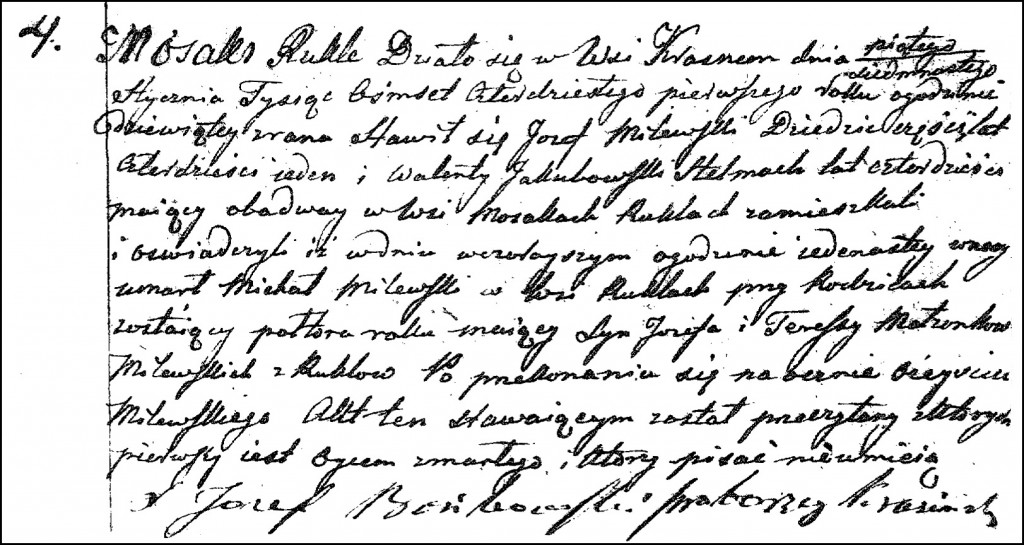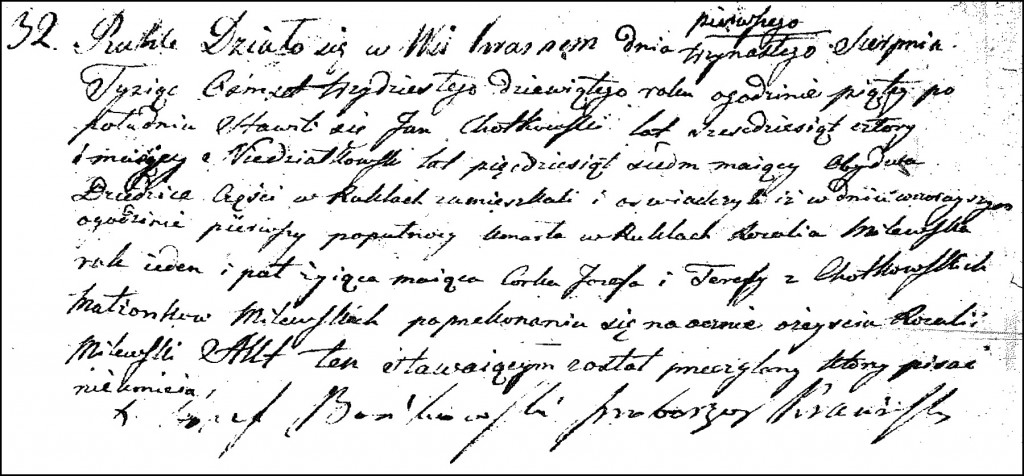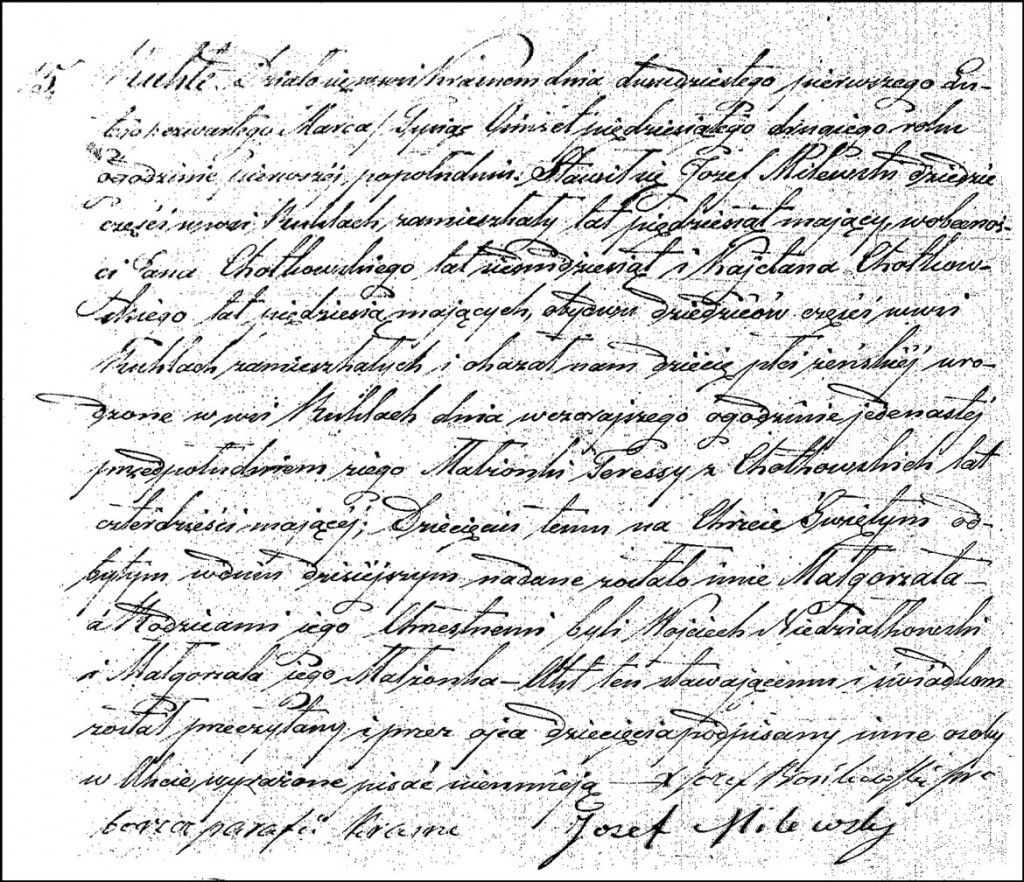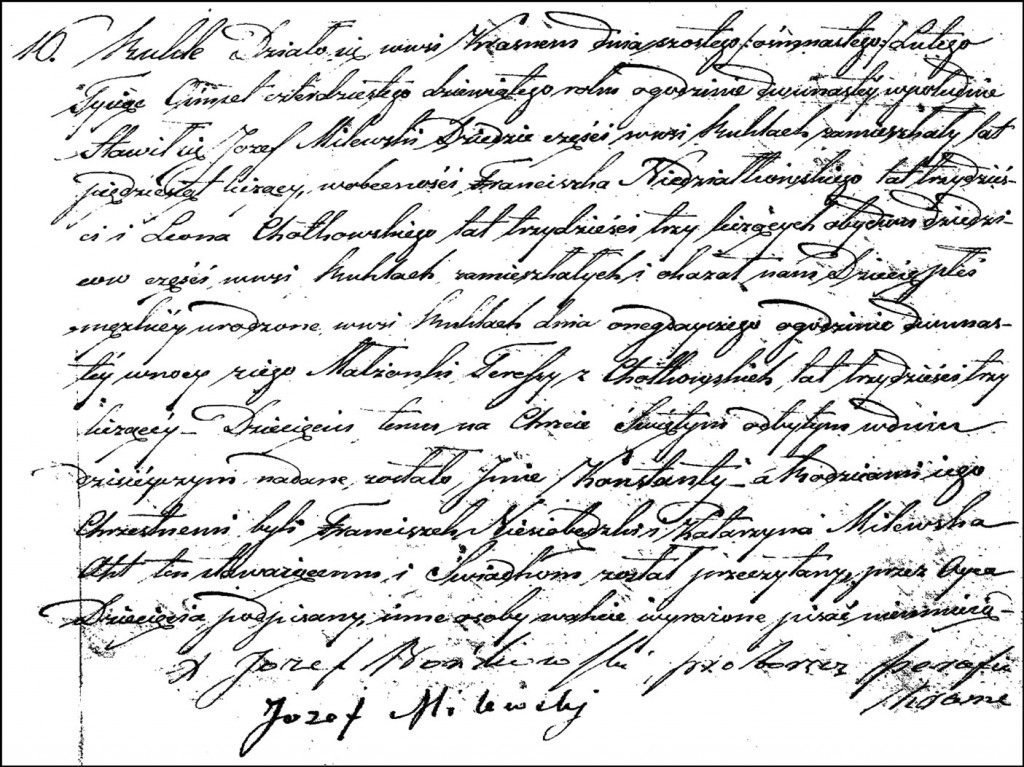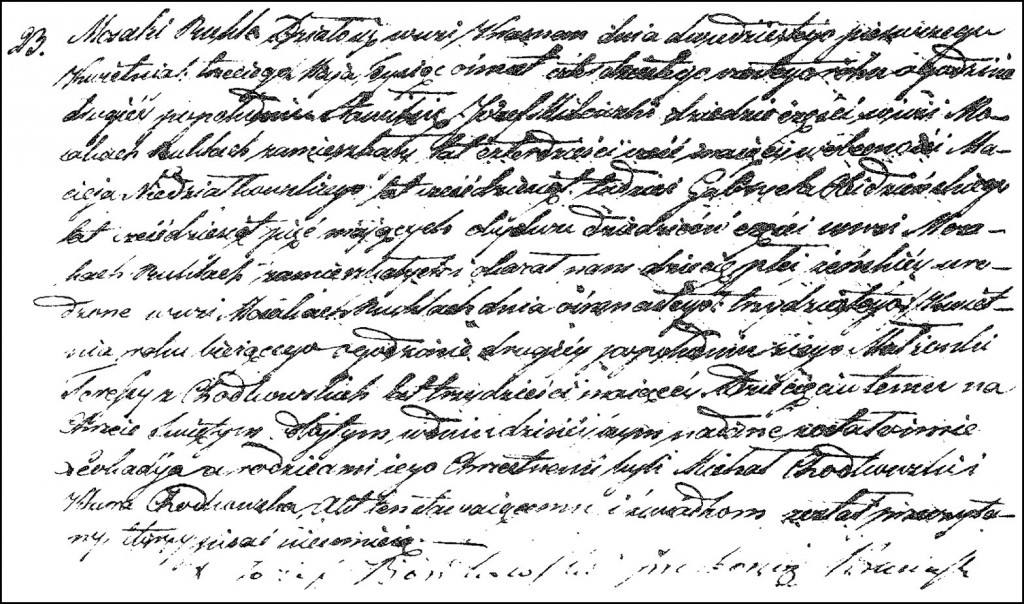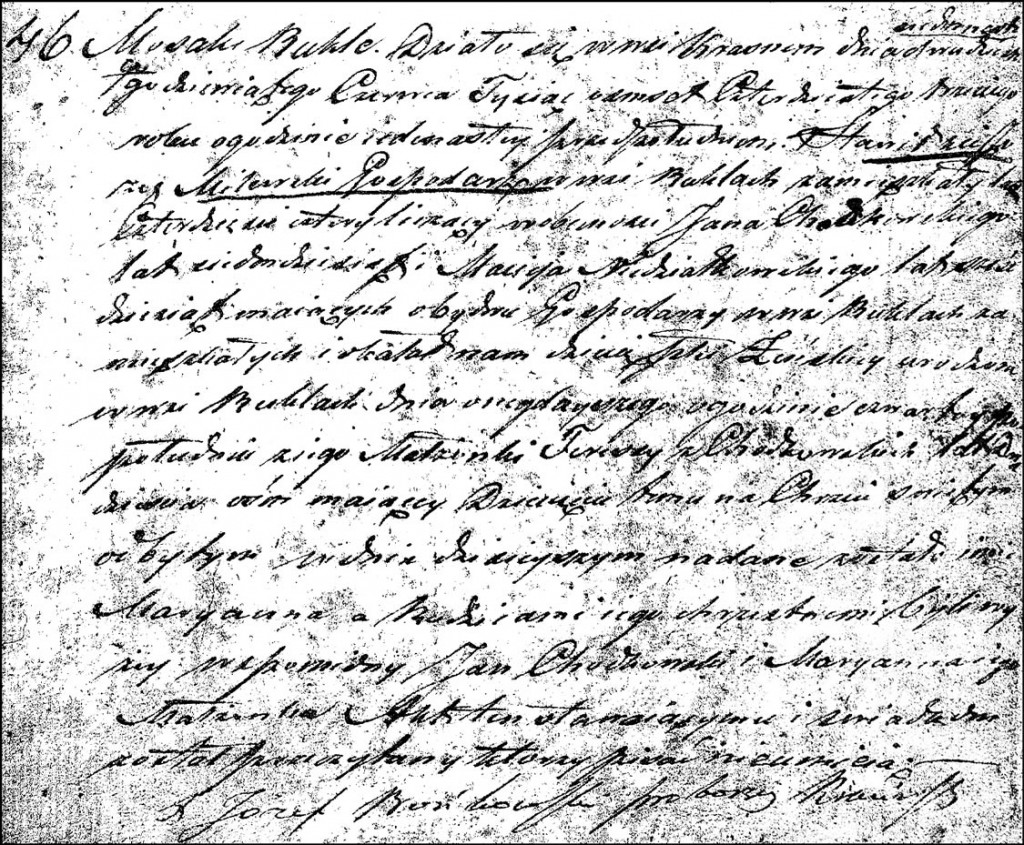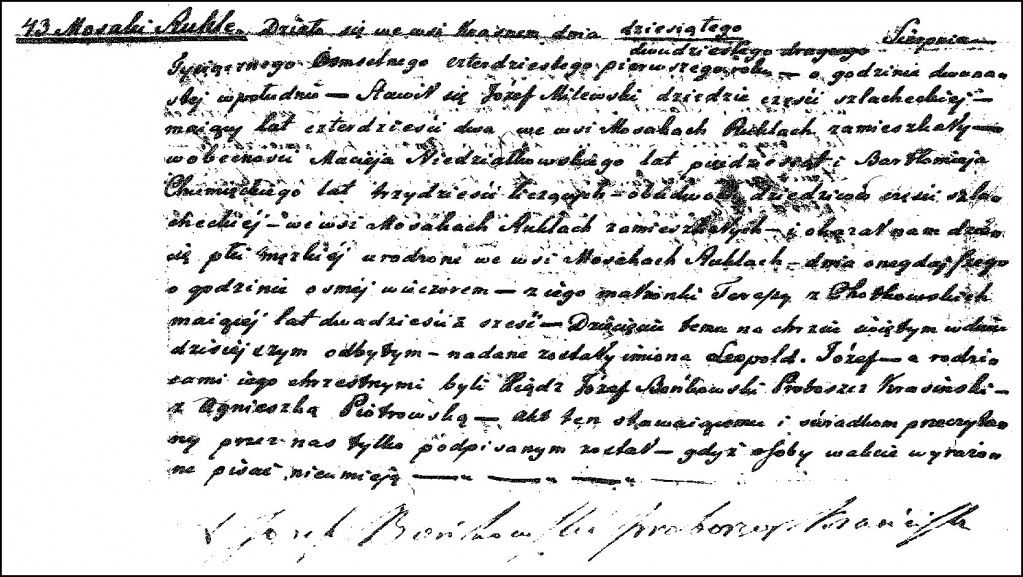Michał Milewski, son of Józef Milewski and Teresa Chodkowska, died on 16 January 1841 in Mosaki Rukle, Przasnysz Obwód, Płock Gubernia, Congress Kingdom of Poland. He was buried in the parish church in Krasne, Przasnysz Obwód, Płock Gubernia, Congress Kingdom of Poland on 17 January 1841.
The Death and Burial Record of Michał Milewski – 1841
SOURCE: Parafia pw. św. Jana Chrzciciela (Krasne, Prasnysz Obwód, Płock Gubernia, Congress Kingdom of Poland), “Akta urodzeń, małżeństw, zgonów 1841-1851 [Records of Births, Marriages, and Deaths 1841-1851],” page 70, entry 4, Michał Milewski, 17 Jan 1841; filmed as Kopie księg metrykalnych, 1808-1892; FHL INTL microfilm 0,702,794.
Click on the image above to view a higher resolution image. Click on the link for a PDF copy of the Death and Burial Record of Michał Milewski. Translated from the Polish, the record reads:
4. Mosaki Rukle . This happened in the village of Krasne on the fifth / seventeenth day of January in the year one-thousand eight-hundred forty-one at the hour of nine in the morning. There appeared Józef Milewski, owner of a part [of the village, forty-one years of age, and Walenty Jakubowski, wheel maker, forty years of age, both residing in Mosaki Rukle, and they stated that yesterday at the hour of eleven at night, Michał Milewski died, living with his parents in the village of [Mosaki] Rukle, son of the married couple Józef and Teresa Milewski, one and a half years of age. After visual confirmation of the death of [Michał] Milewski, this document was read aloud to the declarants who do not know how to write, and of whom the first is the father of the deceased.
    [signed] Reverend Józef Bońkowski, pastor of Krasne
Michał Milewski was my 3rd cousin 3X removed.
Copyright © 2010 by Stephen J. Danko

